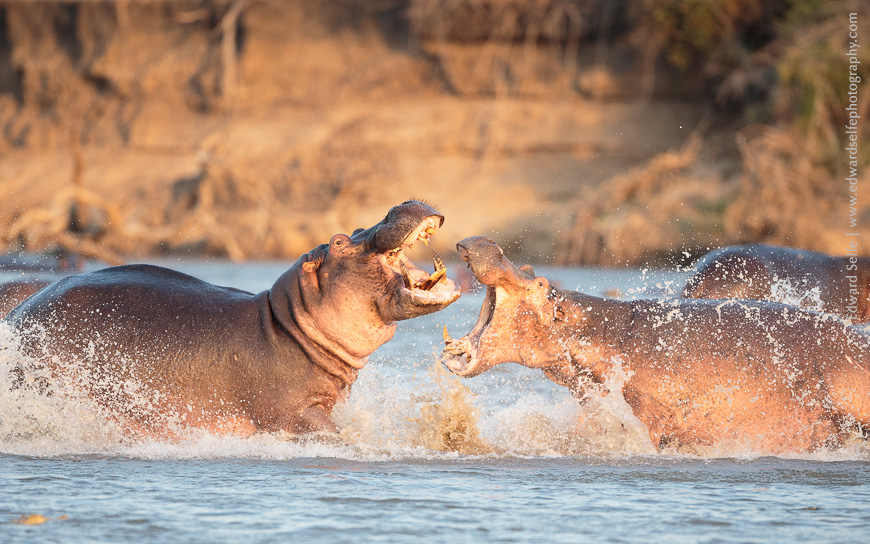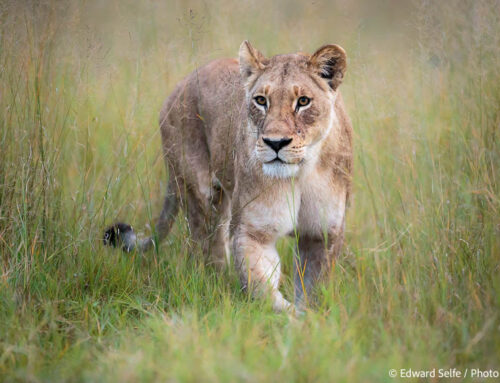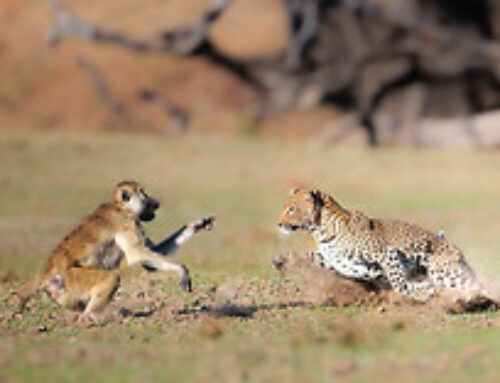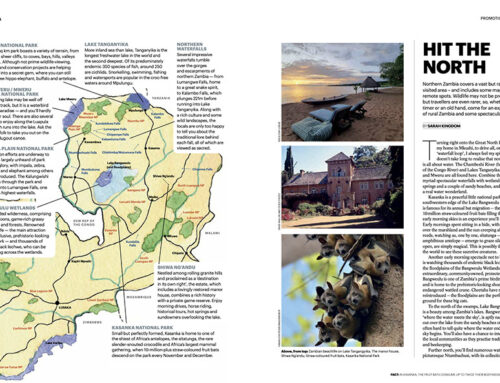As the sun breaks the dry-season horizon, its warm pink glow floods the grey dawn. Diurnal birds, emerging from night-time refuges, call to stake their territorial claim and advise would-be competitors that they’ve survived the night. Having scoured the dry land for forage, hippos return as late as they dare to the safety of the river, submerging to a chorus of honking calls. Elephants, which have been feeding beyond the park’s natural river boundary, return with calves in tow; after quenching vast thirsts, they splash noisily through the shallow water. As the elephants emerge softly onto the sand, the guttural lion call of a nearby pride male carries through the cool air to where you stand. And so begins a day on safari in the Luangwa.
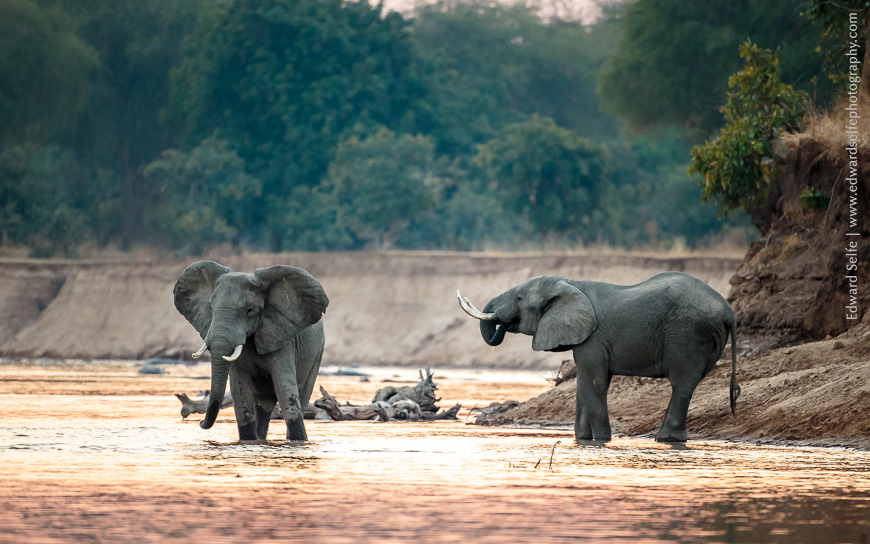
The South Luangwa National Park is home to some of the richest wildlife estate on Earth. The fertile alluvial soil, deposited by an ever-changing river, creates a diversity of habitats which accommodates an impressive variety of life. With the sad exception of rhino, the Valley is home to all of safari’s big mammals, hundreds of bird species and beautiful scenic landscapes. Its aesthetic and wilderness value are a photographer’s and wildlife-lover’s dream.
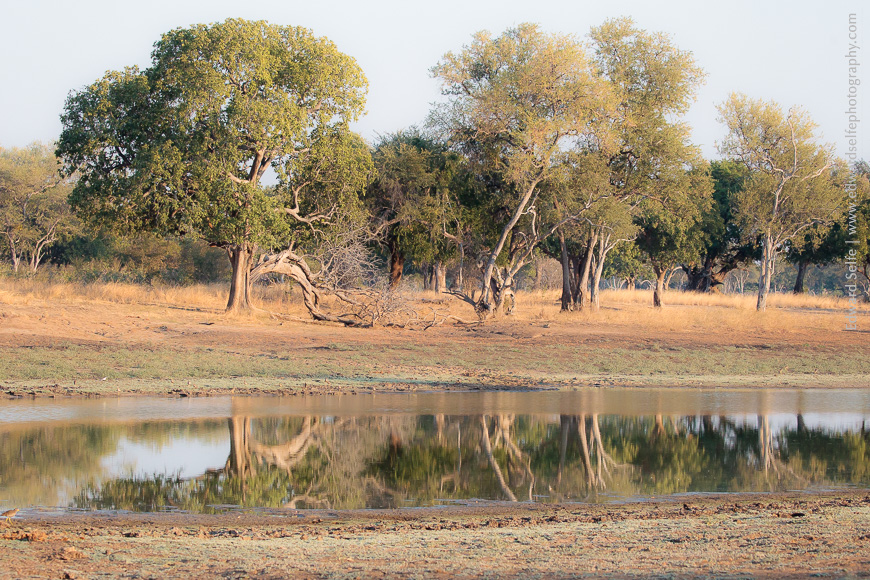
However, it is not simply the range of sightings available but also the extraordinary density and accessibility which is rewarding; it’s not an overstatement to say that there is a sighting ‘around every corner’. And after many years, the game in most areas has become accustomed to the daily visits of safari-vehicles and tolerates close approaches. This is wildlife safari at its best, where you can get close enough that it’s possible to feel the presence of large mammals nearby.
Travellers to the Luangwa are drawn from across the world by the promise of a rustic, wild safari experience. However, there are 5 highlights which top the list of the Valley’s best-known attractions. These 5 are the Luangwa’s endemic giraffe and wildebeest species, the extraordinary breeding colonies of carmine bee-eaters and the increasingly well-known populations of leopard and hippo.
1. As the Rift Valley deepened, the giraffes in the Luangwa area became geographically separated from their original extended population and evolved based on slightly different environmental factors. This has given the Luangwa subspecies – known as Thornicroft’s – slightly shorter stature and unique coat markings. Sightings of these stately mammals are very common throughout the South Luangwa where they can be found selecting the finest browse with long, mobile lips and prehensile tongues. Young males with long flexible necks practice sparring nearby, landing crashing blows on each other with their weighty skulls.
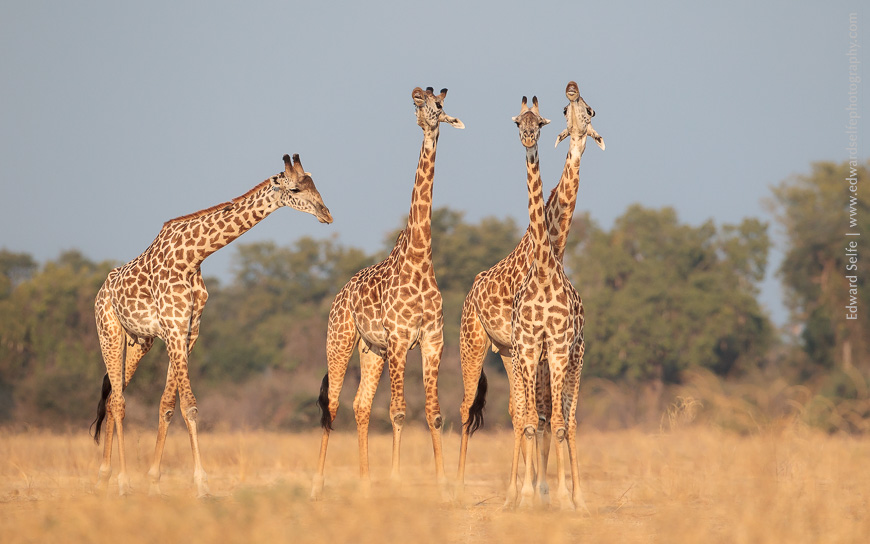
2. Stories abound of God’s mistreatment of the Wildebeest; fables say that He combined the ‘left-over’ body parts of other animals and created these ungainly but charismatic creatures. Undeniably, they are not elegant but Cookson’s Wildebeest – another Luangwa endemic – make up for this with a certain intrigue. They thrive on the grass plains some distance from the river, but as waterholes dry up, they make long daily journeys to quench their thirsts. Watch for large herds trailing through dry mopane woodland, heads held low in the dust of those in front, their coppery flanks and brindled necks blending with the palette of their surroundings.
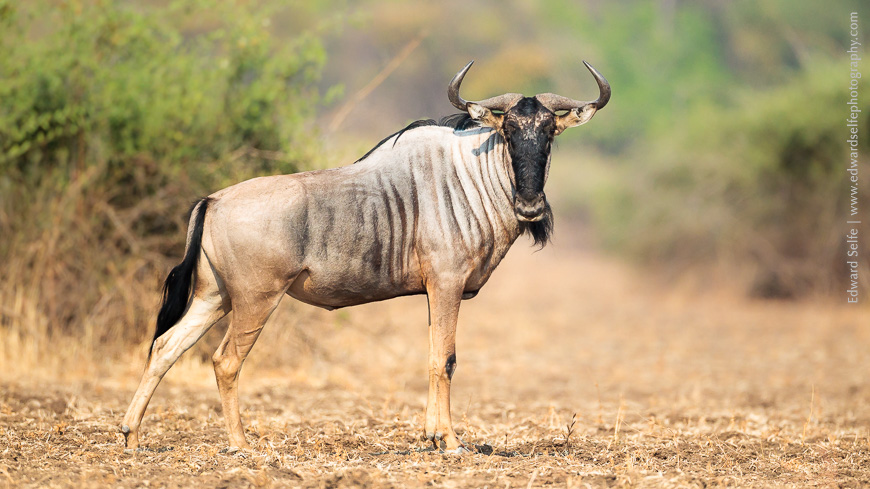
3. The annual visit of the Carmine Bee-eaters to the Zambezi & Luangwa river system is a treat even for those who are not particularly interested in the feathered world! Thousands of richly-coloured streamlined birds hunt for food in the late-dry-season sky. With an insect captured, they return to the banks of the Luangwa river where they have burrowed a nest deep into the sandy cliff. Over the 3-month nesting period, each pair will hunt tirelessly to feed their brood of 2 or 3 chicks and fledge them before the start of the rains. Expect noisy “terk-terk” calls, explosions of deep red and one of the most memorable sights in Nature.
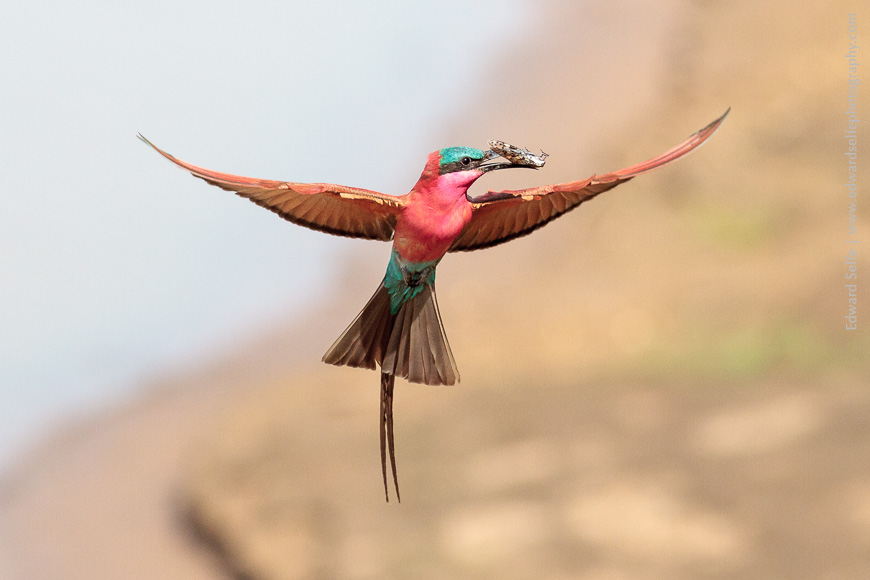
4. The Luangwa’s leopards have become a symbol of this rich and diverse ecosystem; some have even named the area “the Valley of the Leopard”. During the dry months – particularly in the cool of the mornings – leopards can be found defying the scientific texts and hunting antelope in broad daylight. Of course, this isn’t easy and their efforts are often thwarted by vigilant baboons who bark their warning. With little chance of continued success, they amble through the bush – scent-marking occasionally with tail held high – before leaping casually into a secluded tree where flies and daydreams will be their companions until dusk.
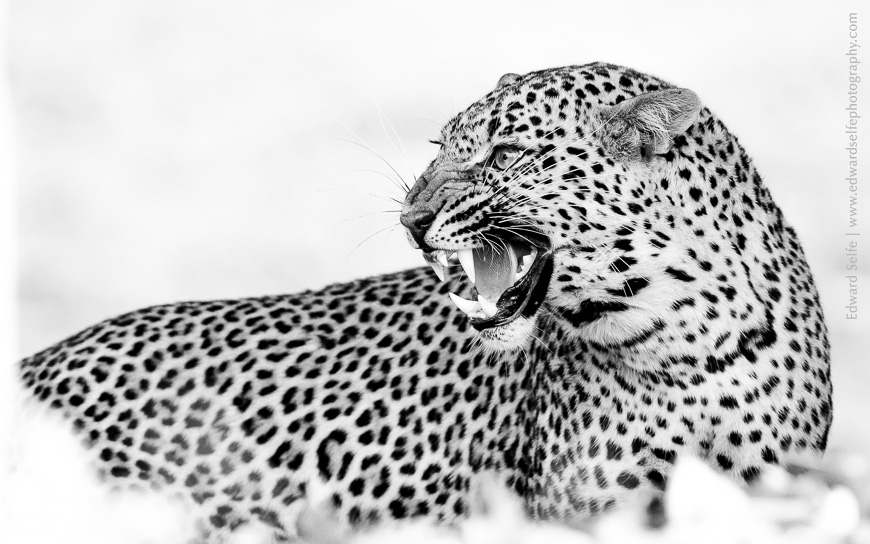
5. The Luangwa River is home to a population of hippos denser than anywhere else on the Continent – perhaps 18,000 strong. There is evidence of them everywhere, including periodic honking-calls throughout the day, visible pathways that become deep trenches and gouged channels and – their trademark – poorly-digested droppings sprayed imprecisely across bushes and trees. But no amount of hippo-evidence prepares the visitor for the sight of 500 hippos cheek-by-jowl in a short section of the shallow, drying river; tempers fray as competition for living-space, forage and mating opportunities intensifies during the winter months. Be prepared for drama as these mega-mammals throw their weight around.
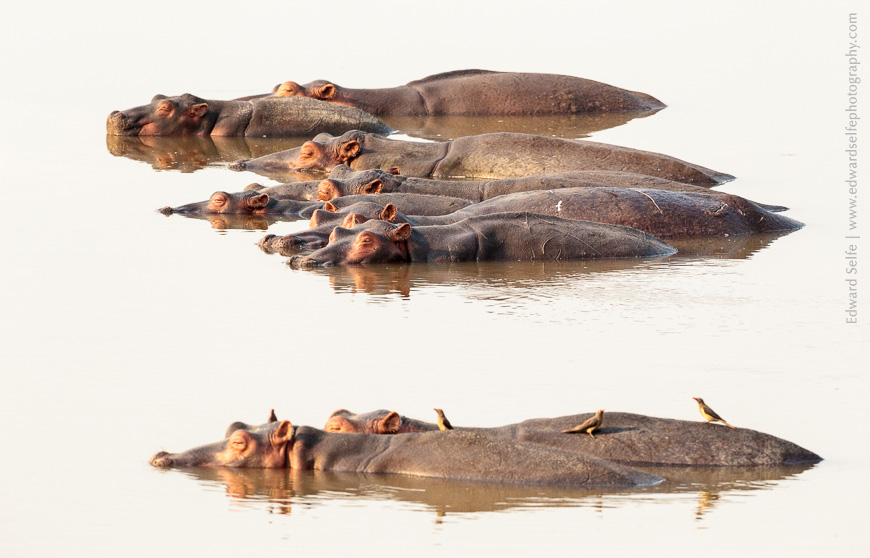
It is hard to overstate the magnificence and conservation importance of the Luangwa Valley as a wildlife reserve. There are few places left on the planet where visitors can observe an intact ecosystem, noticing the role played by each creature in its natural niche. Crucially, this area is also wild, with little development, which lends an authenticity to Luangwa safaris that has been lost in some of the better-known African parks. All things considered, the South Luangwa National Park is one of the finest Safari destinations on the Planet.
